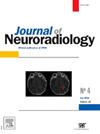Emerging non-invasive MRI techniques for glymphatic system assessment in neurodegenerative disease
IF 3
3区 医学
Q2 CLINICAL NEUROLOGY
引用次数: 0
Abstract
The discovery of the glymphatic system has revolutionized our understanding of brain physiology, particularly in waste clearance and fluid dynamics within the central nervous system. This pathway, essential for nutrient distribution and waste removal, operates predominantly during sleep and has been implicated in neurodegenerative diseases like Alzheimer's and Parkinson's. Recent advances in non-invasive MRI techniques, including diffusion tensor imaging along the perivascular space (DTI-ALPS), perivascular space (PVS) analysis, and free water (FW) indices, have improved our ability to study glymphatic function and its alterations in disease states. This review discusses the glymphatic system's ultrastructure, physiology, and the latest imaging methods to assess this critical pathway. We highlight how these non-invasive MRI techniques can enhance the understanding of glymphatic function in health and disease, with a focus on neurodegenerative conditions. By integrating insights from current research, this review underscores the diagnostic and therapeutic implications of glymphatic dysfunction. Understanding these mechanisms can pave the way for novel strategies to enhance waste clearance and improve neurological health, offering potential benefits for early diagnosis and intervention in neurodegenerative diseases.
新兴的非侵入性MRI技术用于神经退行性疾病的淋巴系统评估。
淋巴系统的发现彻底改变了我们对脑生理学的理解,特别是在中枢神经系统的废物清除和流体动力学方面。这条通路对营养分配和废物清除至关重要,主要在睡眠期间运作,并与阿尔茨海默氏症和帕金森病等神经退行性疾病有关。非侵入性MRI技术的最新进展,包括沿血管周围空间扩散张量成像(DTI-ALPS)、血管周围空间(PVS)分析和游离水(FW)指数,提高了我们研究淋巴功能及其在疾病状态下变化的能力。本文综述了淋巴系统的超微结构、生理学和最新的影像学方法来评估这一关键通路。我们强调这些非侵入性MRI技术如何增强对健康和疾病中淋巴功能的理解,重点是神经退行性疾病。通过整合当前研究的见解,本综述强调了淋巴功能障碍的诊断和治疗意义。了解这些机制可以为提高废物清除和改善神经系统健康的新策略铺平道路,为神经退行性疾病的早期诊断和干预提供潜在的好处。
本文章由计算机程序翻译,如有差异,请以英文原文为准。
求助全文
约1分钟内获得全文
求助全文
来源期刊

Journal of Neuroradiology
医学-核医学
CiteScore
6.10
自引率
5.70%
发文量
142
审稿时长
6-12 weeks
期刊介绍:
The Journal of Neuroradiology is a peer-reviewed journal, publishing worldwide clinical and basic research in the field of diagnostic and Interventional neuroradiology, translational and molecular neuroimaging, and artificial intelligence in neuroradiology.
The Journal of Neuroradiology considers for publication articles, reviews, technical notes and letters to the editors (correspondence section), provided that the methodology and scientific content are of high quality, and that the results will have substantial clinical impact and/or physiological importance.
 求助内容:
求助内容: 应助结果提醒方式:
应助结果提醒方式:


